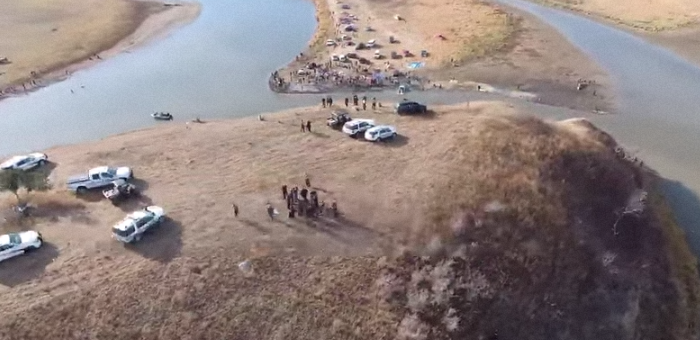Standing Rock and the future of drone activism and journalism
By Sara Rafsky, Google News Lab Fellow at the WITNESS Media Lab
“Eyes in the Sky: Drones at Standing Rock and the Next Frontier of Human Rights Video,” a new report published today by the WITNESS Media Lab, examines how activists and journalists used drones to document the protests by Native American tribes and other advocates against the construction of the Dakota Access Pipeline in North Dakota. Based on extensive research and interviews with drone pilots who operated at Standing Rock and drone experts, the report surveys the benefits, challenges and legal concerns associated with unmanned aerial vehicles, as well as providing tips and further resources.
Until relatively recently, drones were most commonly associated with targeted killings or surveillance. As technology and regulatory policies have evolved to make them more accessible, drones and their recording capabilities have been broadly adopted across a number of industries. But Standing Rock may be the most wide-ranging example yet of activists and journalists using drones for documentation, storytelling and advocacy purposes. Their successes, as well as the many obstacles they encountered, offer broad lessons for social movements and journalists around the globe who look to add drones to their toolkit going forward.
In many ways, Standing Rock offered the ideal environment in which to experiment with drones. From a visual and logistical standpoint, the vast, unpopulated North Dakota plains were optimal for the sweeping aerial shots drones excel at and allowed the community to see what was happening on land where they were not allowed to step foot. Footage that showed the proximity of the pipeline’s drill pad to the Missouri River and the tribe’s water source, for example, provided compelling visual evidence for a central advocacy issue. But while many environmental groups have used drones to document land and nature issues, the most innovative use of drones at Standing Rock may have been to record clashes with the police from above.
Much as the proliferation of mobile phone cameras has shifted the debate on police abuse on the ground, at Standing Rock, the drone operators documented chaotic confrontations between law enforcement and activists from the skies. Using Facebook Live and other livestreaming technologies, journalists such as Myron Dewey of the indigenous media platform Digital Smoke Signals instantaneously distributed footage to thousands of viewers that provided convincing counter-evidence to law enforcement’s version of the clashes. In tandem with on the ground cameras and eyewitness testimony, the drones’ wide-angle, aerial vantage point repeatedly served as a powerful evidentiary tool for reconstructing events.
The successes of and challenges faced by the Standing Rock drone pilots offers important lessons as drones increasingly become part of the documentation toolkit.
Check out our new report!
“Eyes in the Sky: Drones at Standing Rock and the Next Frontier of Human Rights Video”
Featured Image: Still from Standing Rock drone footage by Myron Dewey.

